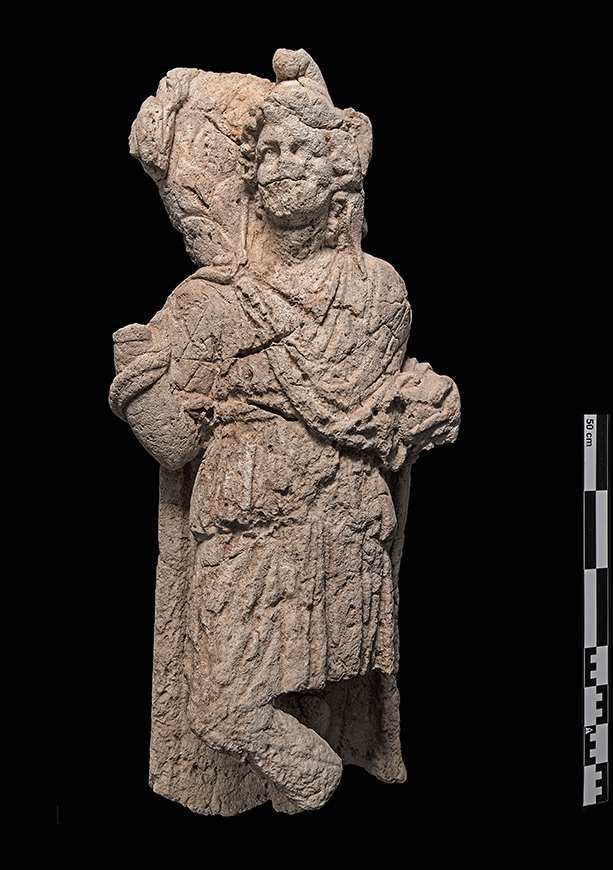Torch lights flicker in the underground space, illuminating the stone statues and casting shadows on the gathering. Military men sit on brick benches and look at the stone carving. Looking back at them through the lantern light is their god — a figure simultaneously well-known and mysterious.
The cult scene feels part ominous, part reverent and entirely like part of a Netflix documentary. In reality, these shadowy gatherings took place across the ancient Roman world.
Archaeologists in Trier, Germany, recently uncovered a 1,600-year-old temple where this Roman cult gathered, according to an April 12 news release from the General Directorate for Cultural Heritage in Rhineland-Palatinate.

The archaeologists unearthed a 4-foot-tall stone relief statue of a figure known as Cautes, experts said. Cautes was a torch bearer for Mithras, the ancient Roman god of light, and symbolized sunrises and sunsets.
The statue showed Cautes standing upright and looking left, photos from the City Administration of Trier show. His now-broken right hand is poised, perhaps mid-gesture or perhaps holding a long-gone object.
Based on the statue and other Roman coins found nearby, archaeologists identified the site as an underground temple or cult space where people worshiped Mithras, the release said. The site was abandoned and destroyed by the end of the fourth century A.D.
Mithras, a deity with origins in ancient Iran, was known to the Romans as a god of light and typically associated with “loyalty to the emperor,” according to Britannica. It’s unclear why or how, but Mithras became popular in the Roman empire in the second century, per Britannica.
The cult of Mithras was very popular among Roman military personnel, the release said.
Cult spaces were typically built in caves or underground, according to Südwestrundfunk, a German news outlet. These sanctuaries usually included a depiction of Mithras slaying a bull.
The cult functioned under a shroud of secrecy, Südwestrundfunk reported. Despite Mithrac temples being found throughout the Roman empire, the exact beliefs and practices of the cult remain mysterious, the outlet reported.
Archaeologists in Trier have moved the statue to a museum for restoration and preservation, according to the release. Excavations of the temple began in February and are ongoing. The city plans to build a new fire station at the site.
Trier is in western Germany, about 290 miles northwest of Munich, and near the Germany-Luxembourg border.
___
© 2023 The Charlotte Observer
Distributed by Tribune Content Agency, LLC



